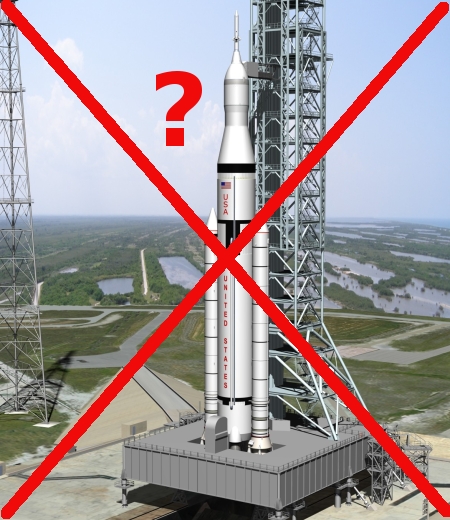Prep of first SLS rocket continues to suggest no launch in ’21
Though NASA and Boeing crews and management have been striving very hard to get the SLS rocket on the launchpad for a liftoff before the end of this year, the schedule has as expected continued to slip, with the chances of a launch by December now increasingly unlikely.
NASA engineers have not discovered any major problems during the SLS testing, but key milestones leading up to the Artemis 1 launch have been steadily sliding to the right in NASA’s processing schedule.
Before NASA raised the Boeing-made SLS core stage onto its mobile launch platform inside High Bay 3 of the VAB in June, managers hoped to connect he Orion spacecraft for the Artemis 1 mission on top of the rocket in August. That’s now expected this fall.
The first rollout of the 322-foot-tall (98-meter) rocket from the VAB to launch pad 39B was scheduled no earlier than September. That’s now expected in late November, at the soonest, according to [Cliff Lanham, senior vehicle operations manager for NASA’s exploration ground systems program].
The schedule slips, while not significant amid the history of SLS program delays, have put a major crunch on NASA’s ambition to launch the Artemis 1 mission this year. The agency is evaluating Artemis 1 launch opportunities in the second half of December, multiple sources said, but that would require NASA to cut in half the time it originally allotted between the SLS fueling test and the actual launch date.
None of this is really a surprise. NASA had always said it would take about six to ten months to get the rocket ready for launch once it arrived in Florida, and it only got there in May. That meant a late November launch could only occur if everything went perfectly. As this is the first time this rocket has ever been assembled, it is not reasonable to expect such perfection.
Based on all factors, the launch will likely occur no earlier than January, but more likely in February, at the earliest. On that schedule it is very likely SpaceX’s Starship will reach orbit first.
Though NASA and Boeing crews and management have been striving very hard to get the SLS rocket on the launchpad for a liftoff before the end of this year, the schedule has as expected continued to slip, with the chances of a launch by December now increasingly unlikely.
NASA engineers have not discovered any major problems during the SLS testing, but key milestones leading up to the Artemis 1 launch have been steadily sliding to the right in NASA’s processing schedule.
Before NASA raised the Boeing-made SLS core stage onto its mobile launch platform inside High Bay 3 of the VAB in June, managers hoped to connect he Orion spacecraft for the Artemis 1 mission on top of the rocket in August. That’s now expected this fall.
The first rollout of the 322-foot-tall (98-meter) rocket from the VAB to launch pad 39B was scheduled no earlier than September. That’s now expected in late November, at the soonest, according to [Cliff Lanham, senior vehicle operations manager for NASA’s exploration ground systems program].
The schedule slips, while not significant amid the history of SLS program delays, have put a major crunch on NASA’s ambition to launch the Artemis 1 mission this year. The agency is evaluating Artemis 1 launch opportunities in the second half of December, multiple sources said, but that would require NASA to cut in half the time it originally allotted between the SLS fueling test and the actual launch date.
None of this is really a surprise. NASA had always said it would take about six to ten months to get the rocket ready for launch once it arrived in Florida, and it only got there in May. That meant a late November launch could only occur if everything went perfectly. As this is the first time this rocket has ever been assembled, it is not reasonable to expect such perfection.
Based on all factors, the launch will likely occur no earlier than January, but more likely in February, at the earliest. On that schedule it is very likely SpaceX’s Starship will reach orbit first.



